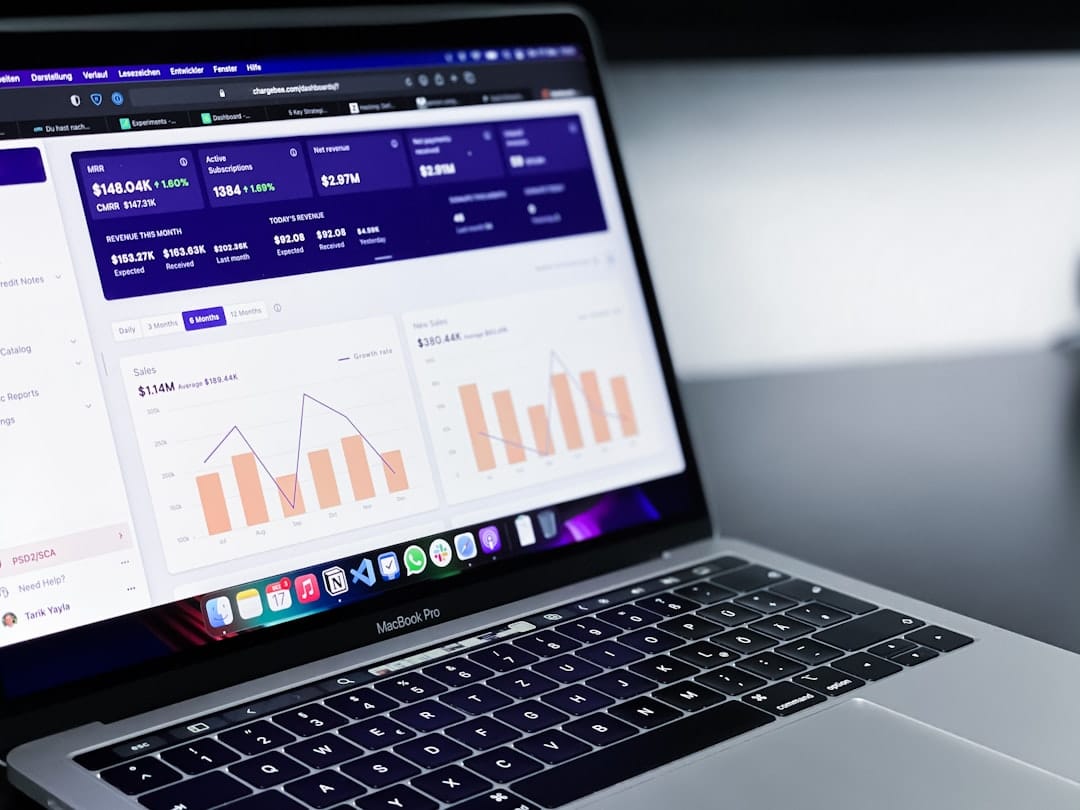Introduction to Hotel Revenue Management
In the highly competitive hospitality industry, effective hotel revenue management strategies can be the deciding factor between a thriving hotel business and one that struggles to break even. In the United States alone—one of the largest and most diverse markets for tourism—hotels face constant fluctuations in demand influenced by economic trends, travel seasons, global events, and changing consumer preferences. Beyond the typical cyclical patterns of tourism, hoteliers must also keep pace with innovations in technology, shifts in traveler behavior, and the ever-growing range of accommodation alternatives available online.
Table of Contents

What Is Hotel Revenue Management?
Hotel revenue management is the strategic practice of applying analytics, performance data, and market insights to determine the right room, for the right guest, at the right price, at the right time. This involves setting and adjusting room rates and availability across multiple distribution channels—both online and offline—to optimize revenue and profit margins. While the concept dates back to the airline industry’s use of yield management, it has since evolved into a comprehensive discipline that touches virtually every aspect of hotel operations, from marketing to guest services.
Why Is It Important?
A well-executed revenue management strategy can:
- Maximize Occupancy and Revenue: By understanding demand patterns, hotels can sell rooms at optimal rates and avoid revenue shortfalls.
- Enhance Guest Satisfaction: Aligning prices with perceived value ensures guests feel they are getting a fair deal, leading to higher satisfaction and loyalty.
- Improve Operational Efficiency: Accurate forecasts and dynamic pricing lead to more efficient staffing, inventory control, and marketing allocations.
- Remain Competitive: Tracking competitor rates and adopting best practices keeps a hotel ahead in a crowded market.
In this article, we’ll explore various hotel revenue management strategies through real-life case studies, demonstrating the tangible benefits of techniques such as dynamic pricing, market segmentation, and advanced analytics. We’ll also delve into the importance of revenue forecasting models and hotel performance metrics that guide decision-making. By the end, you’ll have a comprehensive understanding of how some hotels have applied these strategies successfully—and how you can too.
Overview of Revenue Forecasting Models

Importance of Accurate Forecasting
Forecasting is the backbone of hotel revenue management. When hoteliers accurately predict future demand, they gain the insights needed to make informed decisions about pricing, marketing spend, and resource allocation. Forecasting errors—whether due to insufficient data, faulty assumptions, or poor analytical tools—can have a ripple effect throughout the entire operation, affecting staffing, budgeting, inventory, and profitability.
Reasons Accurate Forecasting Matters
- Optimized Pricing: Forecasting helps identify peak and low-demand periods so you can set competitive yet profitable rates.
- Inventory Management: Understanding future demand ensures you allocate rooms effectively across direct bookings, OTAs, and corporate contracts.
- Budget Planning: Accurate forecasts inform monthly and annual budgets, guiding investments in marketing, renovations, or staff training.
- Guest Satisfaction: Overbooking strategies rely on data-driven predictions. Done correctly, they minimize vacant rooms without causing guest dissatisfaction.
Types of Revenue Forecasting Models
1. Historical Data Analysis
This is the simplest approach. Hotels review past performance data—occupancy rates, Average Daily Rate (ADR), and RevPAR (Revenue per Available Room)—to gauge future demand. While it’s a good starting point, it may not account for sudden market shifts like economic downturns, pandemics, or newly emerging competition.
2. Pickup Forecasting
This method focuses on the rate at which reservations are made (“pickup”) leading up to the arrival date. By examining booking patterns week by week or day by day, hoteliers can project the final occupancy for a specific date. Pickup forecasting is especially useful for adjusting short-term pricing, such as last-minute deals or early-bird discounts.
3. Market Segmentation Analysis
A more sophisticated approach dissects demand by traveler type—business, leisure, group, etc. By understanding the distinct booking behaviors of each segment, hotels can predict demand more accurately. Market segmentation also helps tailor promotional offers, loyalty programs, and marketing campaigns to each category of traveler.
4. Advanced Analytics and Machine Learning
Some hotels use complex algorithms that analyze vast sets of data, including competitor pricing, online search trends, customer reviews, and macroeconomic indicators. These data-driven models can spot subtle correlations and patterns that are invisible to simpler forecasting methods. Machine learning models also “learn” from new data, refining their forecasts over time.
5. Combined/Hybrid Models
In practice, many hotels employ a hybrid approach, combining historical data with pickup trends, competitor rate analysis, and market segmentation data. This multi-layered strategy allows hoteliers to validate one set of forecasts against another, improving overall accuracy.
As the following case studies will show, choosing the right forecasting method and effectively applying it can radically transform a hotel’s revenue potential.
Case Study 1: Dynamic Pricing Implementation

Background of the Hotel
The first case study involves a mid-sized hotel chain with properties in several popular tourist destinations across the United States. Known for its convenient city-center locations and reliable customer service, the chain faced increased competition from boutique hotels and vacation rental platforms. Although occupancy rates were consistently decent, the management team realized they weren’t fully optimizing their room rates in response to fluctuating demand.
Prior to implementing dynamic pricing, the hotel relied on a static rate structure that was only updated seasonally—summer, winter, and in some cases, a separate rate for special events. This rudimentary pricing system led to either underpricing during peak demand or overpricing during shoulder seasons, resulting in missed revenue opportunities and occasional drops in occupancy.
Strategy Details
- Adoption of Real-Time Pricing Software
- The hotel chain partnered with a leading revenue management software provider. The chosen platform tracked real-time market demand, competitor pricing, and inventory levels, automatically suggesting optimal rates. The hotel’s revenue management team retained final approval but could adjust or override suggested rates as needed.
- Integration with PMS and Channel Manager
- To maintain rate consistency across all distribution channels (official website, OTAs, and GDS), the hotel integrated the revenue management software with their property management system (PMS) and channel manager. Any rate changes approved by the revenue team were immediately pushed to all booking platforms.
- Customized Rate Rules
- The hotel set specific rules for each property based on location, guest demographics, and historical booking patterns. For example, properties in city centers with a high volume of business travel were allowed more aggressive adjustments during weekdays, while weekend pricing was fine-tuned to capture leisure travelers looking for short city breaks.
- Continuous Data Analysis and Adjustment
- The revenue management team reviewed data daily, focusing on metrics like Booking Pace, Occupancy on the Books, and competitor ADR. Dynamic pricing updates occurred in real-time, ensuring rates were always aligned with market conditions and inventory demand.
Results and Key Metrics
After a six-month trial across three pilot properties, the following improvements were observed:
- Increased ADR by 12%: Dynamic pricing allowed the hotel to capture higher rates during peak periods without sacrificing occupancy.
- Occupancy Growth of 5%: More competitive mid-week and shoulder-season rates attracted additional bookings from price-sensitive travelers.
- RevPAR Improvement of 18%: Combining growth in both ADR and occupancy led to a substantial jump in revenue per available room.
- Reduced Manual Workload: Automated rate updates freed the revenue team to focus on strategic planning and data analysis, rather than minute-by-minute pricing decisions.
In all, this hotel chain’s move to dynamic pricing paid off. The success hinged on careful software implementation, consistent data monitoring, and empowering the revenue management team to make final decisions based on real-time insights.
Case Study 2: Market Segmentation Approach

Hotel Overview
Our second case study highlights a family-owned resort in Florida, situated near popular beach destinations and theme parks. Historically, this resort catered mostly to leisure travelers, with a smattering of corporate retreats. However, the owners noticed that while occupancy soared during school holidays and spring break, there were marked lulls throughout the rest of the year. Revenues were heavily dependent on seasonal peaks, leading to cash flow challenges during off-peak periods.
Recognizing the limitations of their previous one-size-fits-all marketing approach, the resort decided to dive deeper into market segmentation—analyzing guest profiles in terms of reason for travel, booking channel, demographic details, and price sensitivity.
Revenue Management Strategies Employed
- Identifying Key Segments
- Leisure Families: Primary segment, typically booking around school holidays.
- Business Groups: Corporate events, conferences, and team-building retreats.
- Couples and Honeymooners: Interested in weekend getaways, romantic packages, and spa deals.
- Seasonal Snowbirds: Long-stay guests escaping colder climates for the winter months.
- Tailored Packages and Promotions
- The resort developed unique offerings for each segment. For instance, families were offered “Kids Stay Free” deals during summer and winter breaks, along with discounted tickets to local attractions. Corporate clients received special weekday conference packages, including meeting room discounts and catered lunches. Couples could opt for spa packages and romantic dinner reservations.
- Channel Optimization
- By analyzing booking sources, the resort realized that families and leisure travelers primarily used OTAs, while corporate bookings often came through direct or via negotiated rates. Thus, they allocated more marketing budget to OTAs during holiday seasons and ramped up direct sales efforts (phone calls, emails) for corporate segments.
- Flexible Pricing Based on Segment
- Using revenue forecasting models, the resort determined the likelihood of each segment to pay premium rates. Families often booked far in advance, giving the property lead time to secure higher rates if demand was high. On the flip side, business groups tended to book closer to the event date but were willing to pay more for value-added services like meeting rooms, catering, and team-building activities.
- Year-Round Engagement
- One key shift in strategy involved fostering year-round engagement with various guest segments. Through email marketing and loyalty programs, the resort regularly reminded past guests of upcoming deals, off-season perks, or new resort amenities. This kept the property top-of-mind, even when leisure travel might typically be slow.
Performance Metrics and Outcomes
Within a year of adopting a market-segmentation-driven revenue management strategy, the resort reported:
- Higher Occupancy During Shoulder Seasons: A 9% occupancy increase in traditionally slower months, thanks to targeted promotions for couples and business groups.
- Improved ADR in Peak Seasons: Families were willing to pay a slight premium for added value (e.g., free breakfast, attraction tickets), increasing ADR by 6% during holiday periods.
- Better Channel Mix: Direct bookings increased by 15%, saving on OTA commissions. Corporate event bookings also rose, providing stable weekday revenue streams.
- Enhanced Guest Satisfaction: Customized experiences resonated with each segment, boosting online review scores and repeat business.
By rigorously identifying unique guest segments and tailoring offers accordingly, the resort turned a seasonal dependency into a more balanced, year-round revenue stream. This underscores the power of segmentation as one of the most effective hotel revenue management strategies.
Case Study 3: Advanced Analytics and Technology

Integration
Hotel Background
The final case study highlights a luxury urban hotel situated in a major metropolitan city frequented by both business and leisure travelers. With over 500 rooms, multiple meeting spaces, and upscale dining options, this hotel catered to a wide range of guest needs. However, it faced stiff competition from international hotel brands and upscale boutique properties.
The property had already implemented basic revenue management practices—dynamic pricing and limited segmentation—but management believed they could do more to capitalize on emerging technologies. They sought to harness advanced analytics and cutting-edge revenue tools to gain deeper insights and maintain a competitive edge in a crowded market.
Analytics Tools Utilized
- Machine Learning-Based Revenue Forecasting
- The hotel partnered with a tech startup offering machine learning models specifically tailored for hospitality. These models integrated data from the hotel’s PMS, online reviews, macroeconomic indicators, local event calendars, and competitor prices to provide highly accurate demand forecasts.
- Real-Time Competitor Rate Tracking
- A specialized rate intelligence tool continuously scanned OTA and competitor brand websites, flagging significant changes in competitor pricing. Automated alerts helped the revenue management team swiftly adjust their own rates if market conditions shifted.
- Sentiment Analysis for Guest Feedback
- By using natural language processing (NLP), the hotel analyzed social media posts, online reviews, and direct feedback to gauge guest sentiment. This data revealed not only what guests liked or disliked about the property, but also how external events (like new city attractions or local disruptions) might influence booking decisions.
- Integrated Dashboard for Hotel Performance Metrics
- To consolidate the influx of data, the hotel used a customizable business intelligence dashboard displaying hotel performance metrics such as RevPAR, ADR, GOPPAR (Gross Operating Profit Per Available Room), and customer lifetime value. The dashboard updated in real time, allowing department heads—from marketing to operations—to see the impact of strategic decisions.
Impact on Revenue and Performance Metrics
After a year of harnessing advanced analytics and data integration, the luxury hotel saw remarkable results:
- Stronger Forecast Accuracy
- Forecasting errors dropped by nearly 20%. With more precise demand predictions, the hotel could better plan staffing, manage room inventory, and run targeted marketing campaigns.
- Revenue per Available Room (RevPAR) Increase
- RevPAR rose by 15%, driven by the dual effect of more accurate pricing and improved demand predictions. By confidently adjusting rates according to real-time competitor monitoring, the hotel maximized its revenue during peak times without sacrificing occupancy.
- Improved Guest Satisfaction
- Sentiment analysis pinpointed specific areas for improvement—from room amenities to check-in efficiency. Addressing these issues led to higher review scores on major platforms and a notable increase in repeat bookings, enhancing the hotel’s brand reputation.
- Better Operational Efficiency
- Streamlined, data-based decision-making reduced internal silos. Revenue management collaborated more effectively with marketing, sales, and front-of-house operations. The hotel reported lower employee turnover, as staff were less stressed by reactive decision-making and better supported by accurate data.
In summary, adopting advanced analytics and comprehensive technology solutions can yield impressive improvements in both top-line revenue and overall operational efficiency. This forward-thinking approach enabled this luxury city-center hotel to stay ahead of the curve in a fiercely competitive market.
Frequently Asked Questions
Below are some of the most common questions hoteliers ask when exploring sophisticated revenue management tactics.
- What are the most important hotel performance metrics to track?
- Key metrics include ADR (Average Daily Rate), RevPAR (Revenue per Available Room), Occupancy Rate, GOPPAR (Gross Operating Profit Per Available Room), and Customer Lifetime Value. Tracking these metrics over time—and in relation to competitor benchmarks—helps you understand if your revenue management strategies are effective and sustainable.
- How do revenue forecasting models differ from one another?
- Historical Analysis looks at past occupancy and rate data, while Pickup Forecasting focuses on real-time booking pace. Market Segmentation Analysis breaks down demand by traveler type, and Advanced Analytics or Machine Learning uses large data sets to spot patterns and predict future behavior. Many hotels use a hybrid approach, blending multiple models for better accuracy.
- Is dynamic pricing only suitable for large hotel chains?
- Not at all. Dynamic pricing can benefit properties of all sizes—from small boutique inns to global chains. The key is to scale the approach to fit your budget, operational capacity, and data availability. Even smaller hotels can manually adjust prices based on local events, competitor rates, and historical patterns, though automated tools can make the process easier.
- How does market segmentation impact overall profitability?
- Market segmentation allows you to personalize your offerings to different traveler types, improving conversion rates and guest satisfaction. By identifying each segment’s unique booking habits and price sensitivities, you can optimize marketing spend, tailor promotions, and adjust rates to match each segment’s perceived value. This can lead to higher occupancy, better ADR, and increased ancillary revenue.
- What role does technology play in hotel revenue management strategies?
- Technology is increasingly central to modern revenue management. From revenue forecasting models that incorporate machine learning to integrated dashboards that consolidate real-time data, tech solutions streamline decision-making and enable hoteliers to act proactively rather than reactively. As seen in the case studies, investing in the right tools—whether for rate optimization, competitor analysis, or guest feedback—can significantly boost both revenue and efficiency.
Conclusion: Key Takeaways from Successful Case Studies
The three case studies outlined in this article demonstrate the transformative power of targeted hotel revenue management strategies. By examining real-world successes, we can distill the following core principles:
- Dynamic Pricing Can Substantially Increase RevPAR
- Continuously adapting your room rates to market demand, seasonal changes, and competitor behavior ensures you capture revenue at optimal price points.
- Market Segmentation Optimizes Year-Round Occupancy
- Identifying and targeting distinct traveler segments (e.g., leisure, corporate, couples, long-stay) enables you to craft personalized offers that boost both occupancy and average rates, even during traditionally slow periods.
- Advanced Analytics and Technology Foster Competitive Advantage
- Machine learning models and integrated dashboards enhance forecasting accuracy, minimize manual workloads, and empower hoteliers with real-time insights into consumer and market behavior.
- Accurate Revenue Forecasting Models Are Foundational
- Whether using simple historical data analysis or advanced algorithms, forecasting underpins all revenue management decisions. High-accuracy forecasts guide pricing, marketing spend, staffing, and more.
- Hotel Performance Metrics Provide Direction and Accountability
- Metrics like ADR, RevPAR, and Occupancy Rate serve as benchmarks for revenue management success. Tracking them consistently and comparing them to historical and competitor data is crucial for continuous improvement.
No matter the size or market positioning of your hotel, these strategies can be adapted to fit your operational context. As shown in the case studies, a thoughtful approach to revenue management—combining the right technology with time-tested principles—can yield impressive increases in revenue and guest satisfaction.
Future Trends in Hotel Revenue Management
As we look ahead, several trends are poised to reshape the landscape of hotel revenue management in the United States and globally:
- AI-Driven Personalization
- Beyond machine learning for pricing, artificial intelligence will increasingly enable hoteliers to personalize offers at the individual guest level. This could involve real-time adjustments based on a guest’s browsing behavior, loyalty status, or even social media activity.
- Total Revenue Management
- Rather than focusing solely on rooms, many hotels are expanding their revenue management scope to include spa services, restaurants, meeting spaces, and recreational activities. By forecasting and optimizing every revenue stream, hotels can maximize overall profitability.
- Integration with Guest Experience Platforms
- Future systems will likely unify revenue management data with guest experience data, enabling a more holistic view of how pricing, promotions, and on-property experiences interact to influence guest satisfaction and loyalty.
- Blockchain and Smart Contracts
- Some forward-thinking hotels are experimenting with blockchain-based bookings and loyalty programs to enhance transparency and security. While still nascent, these technologies may eventually streamline channel distribution and reduce dependence on intermediaries.
- Mobile-First Booking and Engagement
- As more travelers use smartphones to research, book, and interact with hotels, revenue managers will need to adapt strategies that cater to mobile booking behaviors. In-app exclusive deals, location-based offers, and push notifications could become standard practice.

